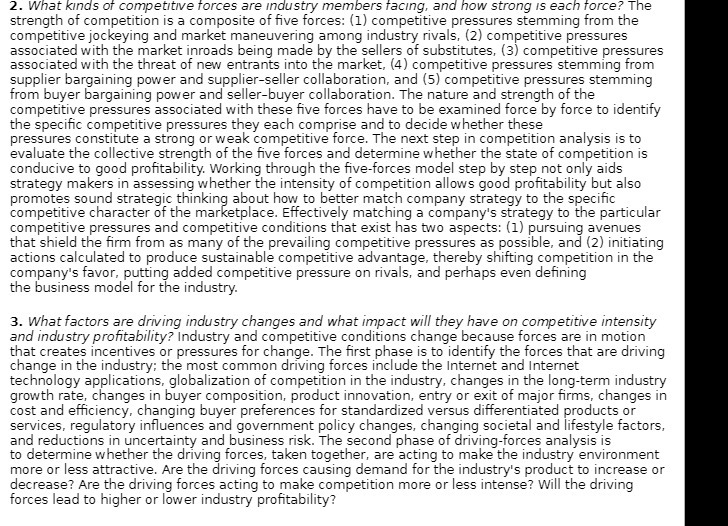2. What kinds of competitive forces are industry members facing, and how strong is each force? The strength of competition is a composite of five forces: (1) competitive pressures stemming from the competitive jockeying and market maneuvering among industry rivals, (2) competitive pressures associated with the market inroads being made by the sellers of substitutes, (3) competitive pressures associated with the threat of new entrants into the market, (4) competitive pressures stemming from supplier bargaining power and supplier-seller collaboration, and (5) competitive pressures stemming from buyer bargaining power and seller-buyer collaboration. The nature and strength of the competitive pressures associated with these five forces have to be examined force by force to identify the specific competitive pressures they each comprise and to decide whether these pressures constitute a strong or weak competitive force. The next step in competition analysis is to evaluate the collective strength of the five forces and determine whether the state of competition is conducive to good profitability. Working through the five-forces model step by step not only aids strategy makers in assessing whether the intensity of competition allows good profitability but also promotes sound strategic thinking about how to better match company strategy to the specific competitive character of the marketplace. Effectively matching a company's strategy to the particular competitive pressures and competitive conditions that exist has two aspects: (1) pursuing avenues that shield the firm from as many of the prevailing competitive pressures as possible, and (2) initiating actions calculated to produce sustainable competitive advantage, thereby shifting competition in the company's favor, putting added competitive pressure on rivals, and perhaps even defining the business model for the industry. 3. What factors are driving industry changes and what impact will they have on competitive intensity and industry profitability? Industry and competitive conditions change because forces are in motion that creates incentives or pressures for change. The first phase is to identify the forces that are driving change in the industry; the most common driving forces include the Internet and Internet technology applications, globalization of competition in the industry, changes in the long-term industry growth rate, changes in buyer composition, product innovation, entry or exit of major firms, changes in cost and efficiency, changing buyer preferences for standardized versus differentiated products or services, regulatory influences and government policy changes, changing societal and lifestyle factors, and reductions in uncertainty and business risk. The second phase of driving-forces analysis is to determine whether the driving forces, taken together, are acting to make the industry environment more or less attractive. Are the driving forces causing demand for the industry's product to increase or decrease? Are the driving forces acting to make competition more or less intense? Will the driving forces lead to higher or lower industry profitability







